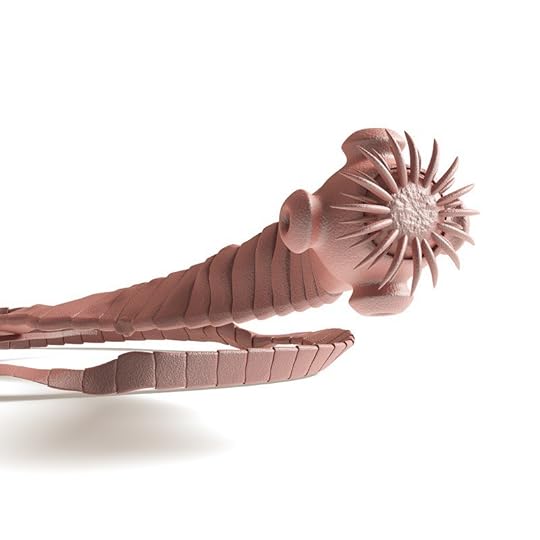Tapeworm Trouble? #SentinelSpectrum Solves Parasite Problems #ad
Tapeworm Trouble? #SentinelSpectrum Solves Parasite Problems #ad

We live on 13 acres in N. Texas so protecting Magic from parasites and tapeworms is job one!
This is the third installment in a series of blog posts covering dog parasites, and year round prevention, in which I’ve discussed fleas, heartworm and other common “buggy” pests as well as a recommended parasiticide. In today’s post, we’re looking more closely at tapeworm trouble (ew!).
 This post is sponsored by Virbac® Sentinel® Spectrum® and the BlogPaws® Pet Influencer Network™ . I am being compensated to help create awareness about protection against common parasites found in dogs but BLING, BITCHES & BLOOD only shares information relevant to our readers. More information about Sentinel Spectrum. Virbac is not responsible for the content of this article.
This post is sponsored by Virbac® Sentinel® Spectrum® and the BlogPaws® Pet Influencer Network™ . I am being compensated to help create awareness about protection against common parasites found in dogs but BLING, BITCHES & BLOOD only shares information relevant to our readers. More information about Sentinel Spectrum. Virbac is not responsible for the content of this article.
NIXING TAPEWORM TROUBLE
You can read a brief overview of common dog parasites here. And you’ll find more specifics about fleas, heartworms and year round treatment in this post, which also asked for your feedback in a survey. Today, I get to share some of the results of that survey, in a very kewl info-graphic, below.
I was really pleased to read some of these results, because it shows the majority of y’all take pet parasite problems seriously!
80% of respondents said that heartworm protection was either a High or Very High priority to them as pet parents.
84% of respondents said that flea protection was either a High or Very High priority for them as a pet parent.
79% of respondents said that they provide their dog flea prevention all year long whereas 20% said that they only provide flea prevention during the spring and summer months.
70% of respondents said that a dog can contract tapeworms from ingesting just one infested flea.
90% of respondents said that tapeworm segments can be found near a dog’s anus, in feces and/or where he lives and sleeps.

Image courtesy of DepositPhotos.com
UNDERSTANDING TAPEWORM TROUBLE
Dogs can contract tapeworm from ingesting fleas during self grooming, or eating a dead animal. I remember our first Sheltie when I was a child was diagnosed with rabbit tapeworm (yikes!) because the horrible backyard breeder my parents got her from had simply tossed dead rabbits out to the dogs to eat.

Grass is the coolest spot to lounge but also offers fleas a place to dine on the dog.
Called proglottids, tapeworms are composed of segments linked together like a chain. The head of the tapeworm, called the scolex or holdfast, is equipped with hooks and suckers that are used to anchor itself to the wall of the small intestine. There is no mouth as such; in fact tapeworms don’t even have a digestive system. Instead, nutrients are absorbed through the segmented body.
The parasite continuously grows new segments that are added from the neck down. Adult worms continue to add segments as long as they live, sometimes attaining lengths of two feet or more composed of hundreds of segments.
WORM REPRODUCTION
Each proglottid contains both male and female reproductive organs. When mature, the segment produces up to 200 eggs. Segments furthest from the scolex are most mature, and once “ripe” they are shed from the worm’s body, and pass in the feces.
Once outside the body, each segment can move independently like tiny inchworms, but when dry they look like grains of rice. Infested dogs typically have segments stuck to the hair surrounding the anal area, or in their bedding.
Eventually, the segments dry and rupture, releasing the eggs they contain into the environment. Tapeworm eggs are eaten by the flea larvae, which then develops as the flea itself matures. When a pet nibbles to relieve that itch, she often swallows the flea and infects herself with tapeworm. The life cycle is complete in two to four weeks.
MEDICAL CONCERNS
Tapeworms are rarely a medical problem, and are usually considered an unpleasant annoyance. The moving proglottids may cause irritation to the anal region, which may prompt dogs to excessively lick themselves or “scoot” their rear against the floor or ground.
Without treatment, however, massive tapeworm infestations potentially interfere with digesting food and/or elimination. Puppies may suffer intestinal blockage should too many worms become suspended the length of the intestinal tract. Also, the hooks of the holdfast can damage the intestinal wall. Diarrhea with mucus and occasionally blood may be signs of tapeworm infestation. Long-term infestation can result in an unkempt, dry-looking coat and generally unhealthy appearance, and reduced energy.
Using an appropriate paraciticide for year round prevention is one of the best ways to protect dogs from both fleas AND tapeworms.
GROSS ALERT!!! Check out the video, below, for a reminder of the types of worms that products like SENTINEL® SPECTRUM® prevent. Magic loves taking his as a treat each month!
Scroll down to see the info-graphic, too. And don’t forget to ask your veterinarian if SENTINEL® SPECTRUM® is right for your dog. Check out the rebate offer here!
INFOGRAPHIC
This is a sponsored conversation written by me on behalf of Virbac® SENTINEL® SPECTRUM®. The opinions and text are all mine.
I love hearing from you, so please share comments and questions. Do you have an ASK AMY question you’d like answered? Do you have a new kitten and need answers? Stay up to date on all the latest just subscribe the blog, “like” me on Facebook, and sign up for Pet Peeves newsletter. Stay up to date with the latest book give aways and appearances related to my September Day pet-centric THRILLERS WITH BITE!
AMY SHOJAI'S Bling, Bitches & Blood - Practical Solutions for Pets Problems & Publishing




